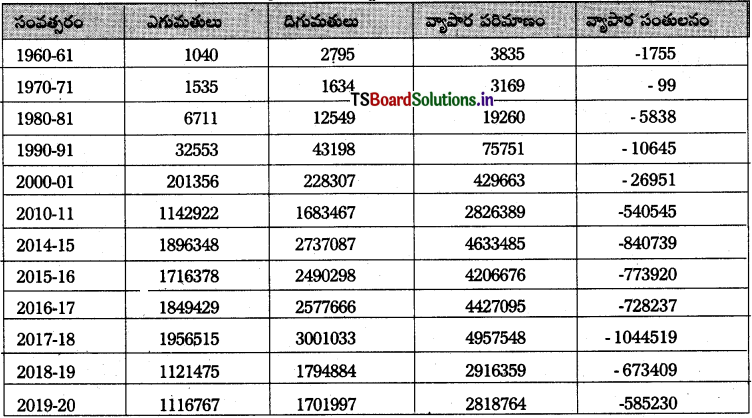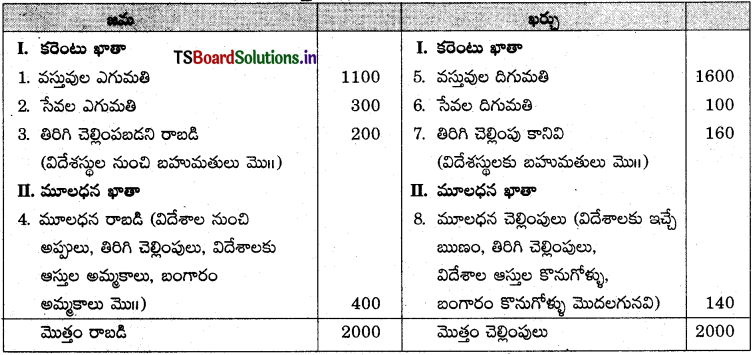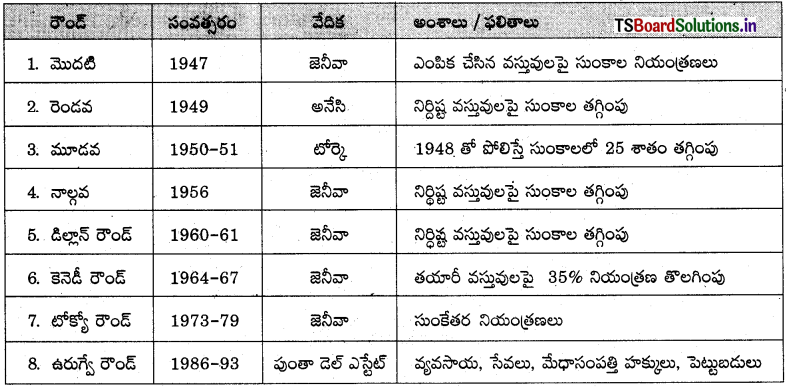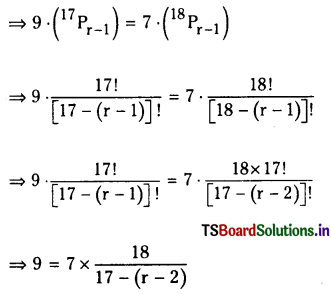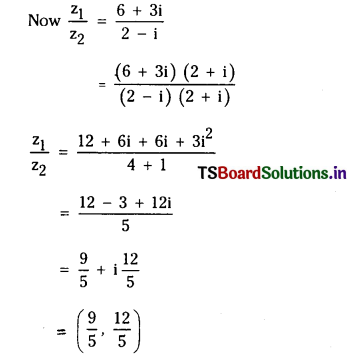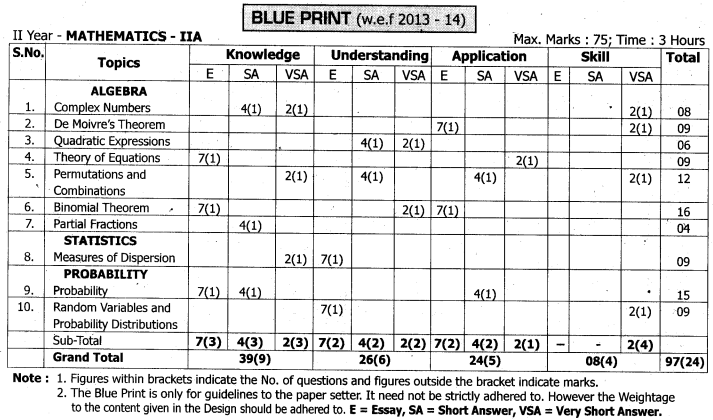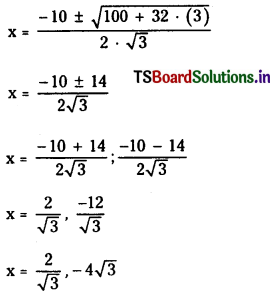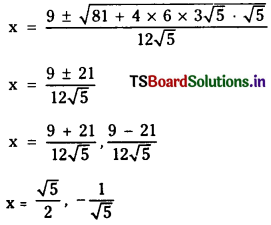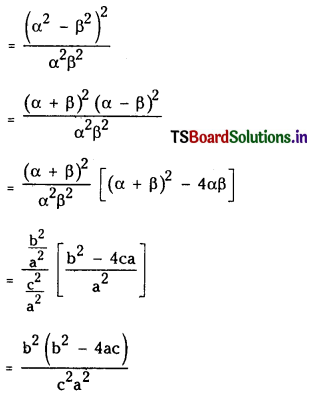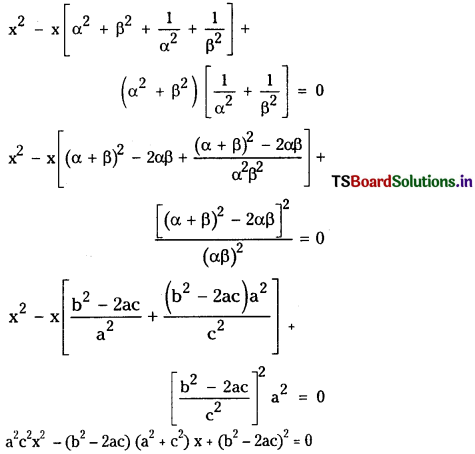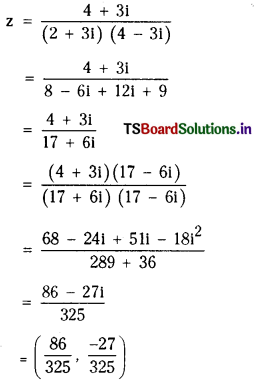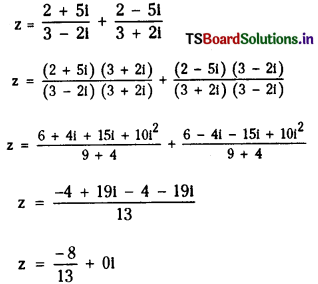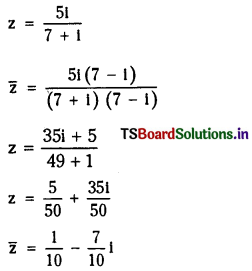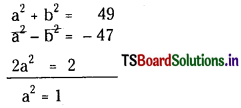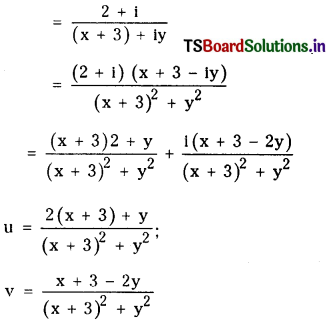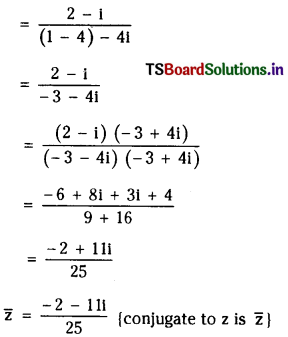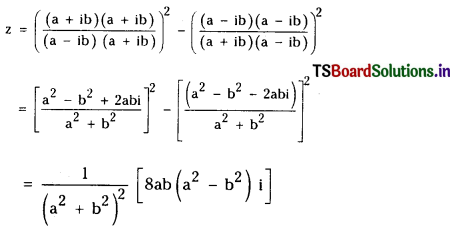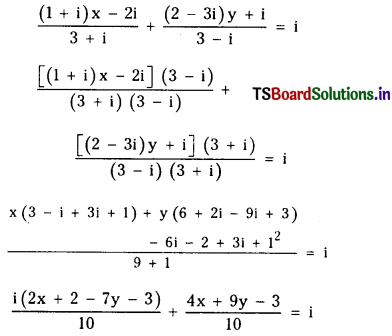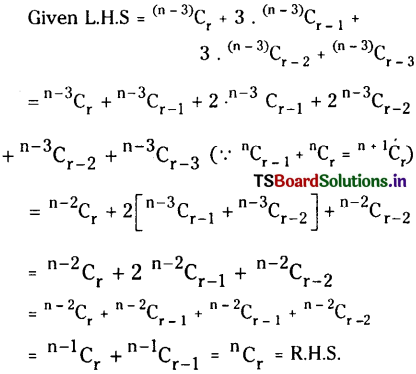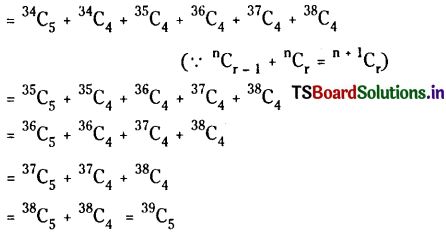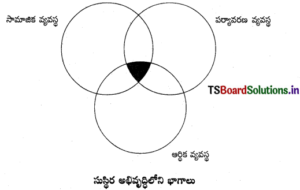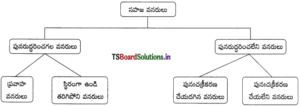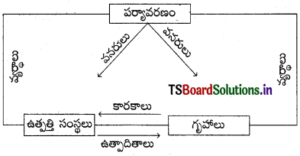Telangana TSBIE TS Inter 2nd Year Sanskrit Study Material 2nd Poem विक्रमाङ्कस्य औदार्यम् Textbook Questions and Answers.
TS Inter 2nd Year Sanskrit Study Material 2nd Poem विक्रमाङ्कस्य औदार्यम्
(निबन्ध प्रश्नः) (వ్యాసరూప సమాధాన ప్రశ్నలు) (Essay Questions)
1. राजा आहवामल्लः कं युवराजं कर्तृमैच्छत् ? ततः किमभवत् |
(రాజు ఆహవమల్లుడు ఎవరిని యువరాజుగా చేయాలనుకున్నాడు ? తరువాత ఏమైంది ?)
2. विक्रमाङ्कदेवस्य उदारशीलं वर्णयत ।
(విక్రమాంకదేవుని ఉదారబుద్ధిని వివరింపుము.)
జవాబు:
‘విక్రమస్య ఔదార్యం’ అనే పాఠ్యభాగాన్ని మహాకవి బిల్హణుడు రచించాడు. ఈ మహాకవి రచించిన విక్రమాంకచరితం నుండి ఈ పాఠ్యభాగం స్వీకరింపబడింది. ఇందులో విక్రముని యొక్క ఔదార్యాన్ని, ఉత్తమ గుణగణాలను కవి చక్కగా ఆవిష్కరించాడు. విక్రముని తండ్రి పట్ల, అన్నగారి పట్ల గల గౌరవమర్యాదలు తెలుస్తాయి.
దక్షిణ భారతదేశంలోని కర్ణాటక రాజ్యాన్ని ఆహవమల్లుడనే పేరుగల రాజు. ఉన్నాడు. అతనికి సోమదత్తుడు, విక్రమాదిత్యుడు, జయసింహుడు అనే ముగ్గురు కుమారులు ఉన్నారు. వారిలో రెండవ కుమారుడైన విక్రముడు చిన్నతనం నుండే క్రమశిక్షణలో సకల విద్యలను నేర్చుకున్నాడు. యుద్ధ విద్యలో ప్రావీణ్యాన్ని సాధించాడు. పెద్దల పట్ల వినయవిధేయతలు గలవాడు. తన కుమారుని సమర్ధతను చూచిన తండ్రి ఆహవమల్లునికి రాజ్యపాలనా బాధ్యతలను విక్రమునికి అప్పగించాలనే కోరిక కలిగింది. తన కుమారుడైన విక్రమునికి అప్పగించాలనే కోరిక కలిగింది.
తన కుమారుడైన విక్రమునికి తన మనోభిప్రాయాన్ని తెలియజేశాడు. తండ్రి నిర్ణయాన్ని వినిన విక్రముడు – “తండ్రీ ! మీరు నాపై ప్రేమతో రాజ్యాన్ని నాకు అప్పగించాలనుకుంటున్నారు.” ఇది యుక్తంకాదు. ఎందుకంటే రాజు యొక్క పెద్ద కుమారుడే రాజ్యాన్ని పొందడానికి అర్హుడు. నేను మీ రెండవ కుమారుడను. అందువల్ల నా అన్న గారైన సోమదేవునికే రాజ్యాన్ని అప్పగించండి.
మీ ఆదేశాన్ని అందరు గౌరవించాల్సిందే. కాని త్యాగబుద్ధికలవానికి సంపదలెప్పుడూ సమకూరుతాయి. మీ అనుగ్రహంవల్ల నాకు సకల సంపదలు సమకూరుతున్నాయి. రాజ్యాంగ నియమాలను అందరు తప్పక అనుసరించాలి. లేకపోతే మనపై ప్రజల్లో చెడు భావం ఏర్పడుతుంది. అందువల్ల నాకు యువరాజ్య పదవి వద్దు. మీ కోరికను పక్కనపెట్టంది.
आस्तामयं मे भुवराजभावः
తండ్రీ ! మీరు మహారాజుగా ఉండి ప్రజలను పాలించండి. నా అన్నను యువ రాజుగా పట్టాభిషేకం చేయండి. అన్ని విధాలుగా మిమ్ములను అనుసరిస్తూ రాజ్య సంరక్షణ బాధ్యతను స్వీకరిస్తాను. ఈ విషయంలో చంద్రశేఖరుడైన పరమశివుడే ప్రమాణము.
ज्योष्ठो ममारोहतु यौवराज्यम्
రాజ్యాంగరీత్యా రాజు యొక్క పెద్ద కుమారునికే రాజ్యాంగాన్ని చేబట్టే అర్హత ఉంటుంది. అర్హతలేని నేను అనుభవిస్తూ ఉంటే అవమానకరమైన ముఖంతో ఉన్న నా అన్నను నేను ఏవిధంగా చూడగలను ? నేను రాజ్యాంగ పదవిని అంగీకరించినట్లైతే నేనే మన వంశ గౌరవాన్ని నాశనం చేసినవాడను అవుతాను.
मथैव गोत्रे लिखितः कलंक:
తన కుమారుని మాటలను తండ్రి విన్నాడు. అతని మనస్తత్వాన్ని గ్రహించాడు. తన కుమారుడైన విక్రమునితో – “నాయనా ! రాజ్యమును పొందుటకు అర్హుడవైనప్పటికినీ నీ ఔదార్య బుద్ధితో నీవు దైవ సమానుడవయ్యావు. నాకు ఎక్కువమంది కుమారులు ఉన్నప్పటికినీ నీ వల్లనే నాకు కీర్తి పెరిగింది.
तन्मे प्रमाणीकुरु वत्स वाक्यम्
ఓ కుమారా ! నేను చెప్పిన మాటలను అంగీకరించు మన రాజ్యలక్ష్మి చిరకాలం వర్ధిల్లుగాక ! మన సామంతరాజులు ఏవిధమైన దుర్గుణాలు లేకుండా స్వచ్ఛమైన నా కీర్తిని మెచ్చుకుందురుగాక !” అని పలికాడు. తండ్రి మాటలు విని విక్రముడు చిరునవ్వుతో “ఓ తండ్రి నేను మన పూర్వీకుల నుండి వస్తున్న పవిత్రమైన కీర్తిని రక్షిస్తాను. రాజ్య కాంక్ష శాశ్వతమైన సత్కీర్తిని నాశనం చేయగూడదు కదా !” అని పలికాడు తన ఔదార్య గుణాన్ని ప్రకటించాడు.
Introduction : The lesson Vikramankasya Audaryam is an extract from Vikramankadeva Charitam written by Biihana. The poet belonged to the twelfth century A.D. Vikramanka was a Chalukya king. When his father wanted to make him te crown prince, he did not agree. He asked his fathér to make his elder brother the crown prince.
The kings desire : Ahavainalla was a Chalukya king who ruled the region of Karnataka. He wanted to make his second son Vikramanka the crown prince as the latter studied all the sciences, and was eager to enter the battlefield. He felt that if such a great warrior became the prince, no one would dare to attack his kingdom, which would be like a lioness sitting on the lap of the prince. When he expressed his desire, Vikramanka did not accept it He said that he was happy spending the wealth in charity and for pleasures. He did not want to be the crown prince. आस्तामयं मे भुवराजभावः | The king said that Lord Siva was the witness to his efforts to get a son, and asked how he could reject his offer.
Vikrama’s generous nature : Vikrama said that he could not become the grown prince as he had an elder brother Somadeva. His brother had the right to be crowned. He would not soil his fame by doing anything contrary to the tradition. If he were to make his brothers face gloomy, he would be the one to bring blemish to the familÿ. मथैव गोत्रे लिखितः कलंक:| He would serve the king and the prince. His father said that Siva declared that Vikrama would be the king. He pleaded with him to accept his offer so that their kingdom would be ever prosperous. तन्मे प्रमाणीकुरु वत्स वाक्यम्| Still, Vikrama did not agree. He said that his brother was competent. He knew as he received orders from him. He would guard the kingdom like a protecting gem. Thus he pleased his father, and made his elder brother receive the honour of being the crown prince.
सन्दर्भवाक्यानि (సందర్భ వాక్యాలు) (Annotations)
1. आस्तामयं मे युवराजभावः ।
परिचय : एतत् वाक्यं विक्रमस्य औदार्यम् इति पाठ्यभागात् स्वीकृतम् । अस्य कविः बल्हणः । अयं पाठ्यभागः विक्रमाङ्कदेवचरितमिति काव्यात् गृहीतः ।
सन्दर्भ : चालुक्यराजः आहवमल्लः स्वस्य द्वितीयपुत्रं विक्रमाङ्कं युवराजं कर्तुम् ऐच्छत् । परन्तु कुमारः न अङ्गीकृतवान् । मम आज्ञां सर्वे राजानः पालयन्ति । त्यागभोगयोः संपद् व्ययीकरोमि । अहं युवराजो न भवामि इति उक्तवान् ।
भाव : मम युवराजत्वम् आस्ताम् ।
2. मयैव गोत्रे लिखितः कलङ्कः ।
परिचय : एतत् वाक्यं विक्रमस्य औदार्यम् इति पाठ्यभागात् स्वीकृतम् । अस्य कविः बल्हणः । अयं पाठ्यभागः विक्रमाङ्कदेवचरितमिति काव्यात् गृहीतः ।
सन्दर्भ : चालुक्यराजः आहवमल्लः स्वस्य द्वितीयपुत्रं विक्रमाङ्कं युवराजं कर्तुम् ऐच्छत् । परन्तु कुमारः न अङ्गीकृतवान् । यौवराज्ये मम अधिकारः नास्ति | ज्येष्ठस्य सोमदेवस्य एव अधिकारः अस्ति । अहं युवराजः भवामि चेत्, अस्माकं वंशः कलङ्कितः भवति इति उक्तवान् ।
भाव : मया एव वंशस्य कलङ्कः आपादितः भवति ।
![]()
3. तन्मे प्रमाणीकुरु वत्स वाक्यम् ।
परिचय : एतत् वाक्यं विक्रमस्य औदार्यम् इति पाठ्यभागात् स्वीकृतम् । अस्य कविः बल्हणः । अयं पाठ्यभागः विक्रमाङ्कदेवचरितमिति काव्यात् गृहीतः ।
सन्दर्भ : चालुक्यराजः आहवमल्लः स्वस्य द्वितीयपुत्रं विक्रमाङ्कं युवराजं कर्तुम् ऐच्छत् । परन्तु कुमारः न अङ्गीकृतवान् । राजा अवदत् यत् परमशिवः एव स्वयं त्वमेव राजा भविष्यसि इति उक्तवान् । यौवराज्यं स्वीकरोतु । चालुक्यलक्ष्मीः चिरम् उन्नता अस्तु । इति उक्तवान् ।
भाव : वत्स, मम, वचसि विश्वासं कुरु ।
लघु समाधान प्रश्नाः (స్వల్ప సమాధాన ప్రశ్నలు)
प्रश्न 1.
विक्रमाङ्कदेवस्य आज्ञा किं करोति ?
समादान:
विक्रमाङ्कदेवस्य आज्ञा पार्थिवानां शिरः चुम्बति ।
प्रश्न 2.
नरेन्द्रः किमर्थं चमत्कारम् अगात् ?
समादान:
विक्रमाङ्कस्य श्रोत्रपवित्रं वचः श्रुत्वा नरेन्द्रः चमत्कारम् अगात् । किंच लक्ष्मीः पांसुलानां चेतः कलुषीकरोति ।
प्रश्न 3.
सोमदेवे सति विक्रमाङ्कदेवस्य किं नास्ति ?
समादान:
सोमदेवे सति विक्रमाङ्कदेवस्य यौवराज्ये अधिकारः नास्ति ।
एकपद समाधान प्रश्नाः (ఏకపద సమాధాన ప్రశ్నలు)
प्रश्न 1.
नृपश्रीः धुनीव का दधातु ?
समादान:
साधारणतां ।
प्रश्न 2.
राज्ञे आहवमल्लाय कः प्रसन्नः ?
समादान:
परमशिवः ।
प्रश्न 3.
विक्रमाङ्कस्य औदार्यं कः अरचयत् ?
समादान:
बिल्हणः ।
कठिनशब्दार्थाः (కఠిన పదాలు అర్ధాలు)
1. धुनी = नदी, నదీ
2. परिरम्भणम् = आलिङ्गनम्, ఆలింగనము
3. मलीमसः = कलङ्कितः, కలంకితం
4. पदातिव्रतम् = पदातिसैन्यस्य व्रतम्, పదాతిసైన్య వ్రతం
5. पांसुलाः = कलङ्किताः, కలంకితులు
6. भवानीदयितः = शिवः, శివుడు
7. दयिता = भार्या, భార్య
8. प्रतिपत्तिः = अवाप्तिः, పొందడము
व्याकरणांशाः
सन्धयः (సంధులు)
1. चेत् + अयम् + चेदयम् – जश्त्वसन्धिः
2. अत्युक्तसाम्राज्यभरः + तनूजम् = अत्युक्तसाम्राज्यभरस्तनूजम् – विसर्गसन्धिः
3. शिरः + चुम्बति = शिरश्चुम्बति – श्रुत्वसन्धिः
4. देवः + अथ = देवोऽथ – विसर्गसन्धिः
5. भूयात् + मयि = भूयान्मयि – अनुनासिकसन्धिः
![]()
6. तातः + चिरम् = तातश्चिरम् – श्श्रुत्वसन्धिः
7. क्षितीन्दुः + आयासशूंन्यम् = क्षितीन्दुरायासशून्यम् – विसर्गसन्धिः
8. अगात् + नरेन्द्रः = अगान्नरेन्द्रः – अनुनासिकसन्धिः
9. लक्ष्मीः + धुरि = लक्ष्मीधुर – विसर्गसन्धिः
10. अशक्तिः + अस्य = अशक्तिरस्य – विसर्गसन्धिः
11. उत्सवं + च = उत्सवश्च – परसवर्णसन्धिः
12. अकारयत् + ज्येष्ठम् = अकारयज्ज्येष्ठम् – श्चुत्वसन्धिः
समासाः (సమాసాలు)
1. समराश्च उत्सवाश्च – समरोत्सवाः तेभ्यः – समरोत्सवेभ्यः – द्वन्द्वसमासः
2. अद्भुतसाहसम् एव अङ्कं यस्य सः – अद्भुतसाहसाङ्कः – बहुव्रीहिः
3. अङ्के स्थितं अङ्कं यस्य सः अङ्कस्थिताङ्कः – बहुव्रीहिः
4. कृतः प्रयत्नः येन सः – कृतप्रयत्नः तं – बहुव्रीहिः
5. चूडायाः आभरणं चूडाभरणं चन्द्रः चूडाभरणं यस्य सः – चन्द्रचूडाभरणः – बहुव्रीहिः
6. अङ्गीकृतं यौवराज्यं येन सः – अङ्गीकृतयौवराज्यः – बहुव्रीहिः
7. दन्तस्य मयूखाः दन्तमयूखाः तेषां लेखा ताम् – दन्तमयूखलेखाम् – षष्ठीतत्पुरुषः
8. विचारस्य चातुर्यम् – विचारचातुर्यम् – षष्ठीतत्पुरुषः – षष्ठीतत्पुरुषः
9. नृपस्य श्रीः नृपश्रीः तस्याः परिरम्भणं तेन नृपश्रीपरिरम्भणेन – षष्ठीतत्पुरुषः
10. परिम्लानं मुखं यस्य सः – परिम्लानमुखः तम् – परिम्लानमुखम् – बहुव्रीहिः
11. आक्रान्तानि दिगन्तराणि येन सः – आक्रान्तदिगन्तरः – बहुव्रीहिः
12. रोमाञ्चैः तरङ्गितम् अङ्गं यस्य सः – रोमाञ्चतरङ्गिताङ्गः – बहुव्रीहिः
13. मृगः अङ्कः यस्य सः मुगाङ्कः, मृगाङ्कः मौलौ यस्य सः – मृगाङ्कमौलिः – बहुव्रीहिः
14. निर्गतः मत्सरः येभ्यः ते निर्मत्सराः – बहुव्रीहिः
15. धृता आज्ञा येन सः – धृताज्ञः – बहुव्रीहिः
अर्थतात्पर्याणि (అర్ధ తాత్పర్యములు) (Meanings and Substances)
1. सर्वासु विद्यासु किमप्यकुण्ठम् उत्कण्ठमानं समरोत्सवेभ्यः ।
श्रीविक्रमादित्यमथावलोक्य स चिन्तयामास नृपः कदाचित् ॥
సర్వాసు విద్యాసు కిమప్యకుంఠం ఉత్కంఠమానం సమరోత్సవేభ్యః |
శ్రీవిక్రమాదిత్యమథావలోక్య స చింతయామాస నృపః కదాచిత్ః ||
पदच्छेदः – सर्वासु, विद्यासु, कि अपि, अकुंठन्, उत्कंठमानं, समरोत्सवेभ्यः, श्रीविक्रमादित्यं, अथ, अवलोक्य सः, चिन्तयामास नृपः, कदाचित् ।
अन्वयक्रमः – सर्वासु विद्यासु अकुण्ठम्, समरोत्सवेभ्यः, उत्कंठमानं, श्रीविक्रमादित्यं, अवलोक्य सः, नृपः कदाचित् चिन्तयामास ।
अर्थाः सर्वासु विद्यासु = అన్ని విద్యలయందు,
अकुंठम् = నైపుణ్యముగల;
समरोत्सवेभ्यः = యుద్ధరంగములయందు;
उत्कंठ मानम् = ఉత్కంఠ కలిగిన ;
श्रीविक्रमादित्यम् = విక్రమాదిత్యుడిని;
अवलोक्य = చూచి ,
सः नृपः = ఆ రాజు,
कदाचित् = ఒకసారి;
चिन्तयामास = ఆలోచించాడు
भावः – ఒకసారి భల్లాలరాజు అన్ని విద్యలయందు ప్రావీణ్యాన్ని సంపాదించిన, యుద్ధముల యందు ఉత్కంఠగానున్న విక్రమాదిత్యుడిని చూచి ఆలోచించాడు.
Having observed that Sri Vikramaditya had learnt all the sciences, and was eager to enter the battlefields, the king once reflected.
2. अलङ्करोत्यद्भुतसाहसाङ्कः सिंहासनं चेदयमेकवीरः ।
एतस्य सिंहीमिव राजलक्ष्मीमङ्कस्थितां कः क्षमतेऽभियोक्तम् ॥
అలంకరోత్యద్భుతసాహసాంకః సింహాసనం చేదయమేకవీరః |
ఏతస్య సింహీమివ రాజలక్ష్మీమంకస్థితాం కః క్షమతేన్ భియోక్తుం ॥
पदच्छेदः – अलंकरोति, अद्भुतसाहसांकः, सिंहासनं, चेत्, अयं, एकवीरः, एतस्य सिंहीव, राज्यलक्ष्मी, अङ्कस्थितां कः, क्षमते, अभियोक्तुम् ।
अन्वयक्रमः – अद्भुतसाहसांकः एकवीरः अयं सिंहासनं, अलंकरोति, चेत्, सिंहीव, एतस्य, अंकस्थितां, राज्यलक्ष्मी, कः अभियोक्तुम्, क्षमते ।
अर्थाः – अद्भुतसाहसांकः = అద్భుతమైన సాహస చిహ్నములు కల,
एकवीरः = ఒకే ఒక వీరుడైన;
अयं = ఈ విక్రమాదిత్యుడు;
सिंहासने = సింహాసనమునందు;
अलंकरोति चेत् = అలంకరింపబడియున్నట్లైతే,
सिंहीव = ఆడసింహమువలె;
अंकस्थितां = ఒడిలోనే ఉన్నట్టి ;
एतस्य = ఇతని యొక్క;
राज्यलक्ष्मीं = రాజ్యలక్ష్మిని;
कः = ఎవడు;
अभियोक्तुं = దండెత్తి అపహరించాడు
क्षमते = సమర్ధుడగును.
भावः – అద్భుత సాహస చిహ్నములు గల వీరాధివీరుడైన ఈ విక్రమాదిత్యుడు సింహాసనాన్ని అధిష్టించినట్లైతే ఆడసింహం వలె ఇతని ఒడిలో ఉన్న రాజ్యలక్ష్మి దండెత్తి అపహరించడానికి ఎవనికి సమర్ధత ఉంది ? లేదని భావము.
If this only one warrior, the wonderful Sahasanka ascends the throne, who dares to attack this kingdom that is like a lioness on his lap ?
![]()
3. करोमि तावद्युवराजमेनम् अत्युक्तसाम्राज्यभरस्तनूजम् ।
तद्वयीसंश्रयणाद्दधातु धुनीव साधारणतां नृपश्रीः ॥
కరోమి తావద్యువరాజమేనం అత్యుక్తసామ్రాజ్యభరస్తనూజమ్ |
తటద్వయీసంశ్రయణాద్దధాతు ధునీవ సాధారణతాం నృపశ్రీః
पदच्छेदः – करोमि, तावत्, युवराजमेनम्, अंत्युक्तसाम्राज्य, भरः, तनूजम्, तटद्वयीसंश्रयणात् दधातु, धुनीव, साधारणताम् नृपश्रीः ।
अन्वयक्रमः – एनं, तनूजं, युवराजम् करोमि, अत्युक्तसाम्राज्यभरः, तटद्वयी संश्रयणात्, धुनीव, नृपश्रीः, साधारणतां दधातु ।
अर्थाः – ऐनं तनूजम् = ఈ కుమారుడిని ;
युवराजं = యువరాజుగా ;
करोमि = చేయుదును;
अत्युक्तसाम्राज्यभरः = అనంత సామ్రాజ్య భారాన్ని వహిస్తూ;
तटद्वयी संश्रयणात् = రెండు ఒడ్డుల మధ్య ఉన్న,
धुनीव = నది వలె ;
नृपश्रीः = రాజ్య లక్ష్మి ;
सारणताम् = సామాన్యస్థితిని ;
दधातु = పొందునుగాక !
भावः-
నేను ఈ కుమారుడైన విక్రమాదిత్యుడిని యువరాజుగా నియమిస్తాను. అతడు సమస్త సామ్రాజ్యాన్ని పాలిస్తూ, రెండు ఒడ్డుల మధ్య స్థిరంగా ఉన్న నది వలె ఈ రాజ్యలక్ష్మి ఎలాంటి ఒడిదుడుకులు లేకుండా సాధారణంగా ఉండగలదు.
I shall make my son the prince, without relinquishing the burden of the kingdom. Then like a river that becomes calm while touching both the banks, the kingdom also will be calm.
4. एवं विनिश्चित्य कृतप्रयत्नम् ऊचे कदाचित्पितरं प्रणम्य ।
सरस्वतीनूपुरशिञ्चितानां सहोदरेण ध्वनिना कुमारः ॥
ఏవం వినిశ్చిత్య కృతప్రయత్నం ఊచే కదాచిత్పితరం ప్రణమ్య |
సరస్వతీనూపుర శింజితానాం సహోదరేణ ధ్వనినా కుమారః ॥
पदच्छेदः एवं विनिश्चित्य, कृतप्रयत्नम्, ऊचे, कदाचित् पितरं, प्रणम्य, सरस्वतीनूपुर, शिञ्चितानां, सहोदरेण, ध्वनिना, कुमारः ऊचे ।
अन्वयक्रमः एवं विनिश्चित्य, कृतप्रयत्नं पितरं कुमारः कदाचित्, प्रणम्य, सरस्वीनूपुरु शिंजितानां, सहोदरेण, ध्वनिना, ऊचे ।
अर्थाः –
एवं = ఈ రీతిగా ;
विनिश्चित्य = నిశ్చయించుకొని;
कुमारः = కుమారుడైన విక్రమాదిత్యుడు,
कृतप्रयत्नम् = ప్రయత్నం చేయుచున్న,
पितरम् = తండ్రిని,
प्रणम्य = నమస్కరించి ;
सस्वतीनूपुरशिंचितानां = సరస్వతీదేవి కాలి అందెల శబ్దములకు ;
सहोदरेण = సోదరుని వలె ఉన్న;
ध्वनिना = ధ్వనితో ;
कदाचित् = ఒకసారి
ऊचे = పలికెను
भावः-
ఈ విధంగా నిశ్చయించుకొనిన, యువరాజ పట్టాభిషేకం చేయడానికి ప్రయత్నిస్తున్న తండ్రికి కుమారుడైన విక్రమాదిత్యుడు నమస్కరించి సరస్వతిదేవి కాలి అందెలవలె మధురమైన కంఠధ్వనితో పలికాడు.
When his father made such an effort having thought so, Vikramanka said to his father with words that sounded like the jingling of the anklet of Saraswati.
5. आज्ञा शिरशुम्बति पार्थिवानां त्यागोपभोगेषु वशे स्थिता श्रीः ।
तव प्रसादात्सुलभं समस्तम् आस्तामयं मे युवराजभावः ॥
ఆజ్ఞా శిరశ్చుంబతి పార్ధివానాం త్యాగోపభోగేషు వశే స్థితా శ్రీః |
తవ ప్రసాదాత్సులభం సమస్తం ఆస్తామయం మే యువరాజభావః ॥
पदच्छेदः – आज्ञा, शिरः, चुम्बति, पार्थिवानां, त्यागोपभोगेषु, वशे, स्थिता, श्रीः, तव, प्रसादात्, सुलभं, समस्तम्, आस्ताम्, अयं मे, युवराजभावः ।
अन्वयक्रमः आज्ञा, पार्थिवानां, शिरः, चुम्बति, त्यागोपभोगेषु, श्रीः, वशे, स्थिता, तव, प्रसादात् समस्तम् सुलभम्, मे, अयं, युवराजभावः, आस्ताम् ।
अर्थाः – आज्ञा = ఆజ్ఞతో;
पार्थिवानां = రాజుల యొక్క;
शिरः = శిరస్సును;
चुम्बति = ముద్దిడుకొనుచున్నది ;
त्यागोपभोगेषु = త్యాగము చేయుటలోను, అనుభవించడంలోను ;
श्रीः = సంపద ;
वशे स्थिता = నా వంశంలో ఉన్నది ;
तव = నీ యొక్క ;
प्रसादात् = అనుగ్రహం వలన,
समस्ताम् = సమస్తము,
सुलभम् = తేలికగా లభ్యమగుచున్నది
अयं = ఈ
युवराजभावः = యువరాజ్యాభిషేక విషయం
आस्ताम् = అట్లు ఉండనిమ్ము
भावः –
రాజా ! నా ఆదేశాన్ని రాజులందరు శిరసావహించి పాటిస్తారు. త్యాగము చేయాలన్నా, అనుభవించాలన్నా సంపద నా వశంలో ఉన్నది. మీ అనుగ్రహంతో అంతటిని సులభంగా పొందగలుగుతున్నాను. అందువల్ల ఈ యువరాజ్య పట్టాభిషేక విషయం దూరం పెట్టండి.
“The kings obey my order. I spend money for donation and enjoyment. By your grace, everything is easily available to me. Let princehood be kept aside.”
6. जगाद देवोऽथ मदीप्सितस्य किं वत्स धत्से प्रतिकूलभावम् ।
ननु त्वदुत्पत्तिपरिश्रमे मे स चन्द्रचूड़ाभरणः प्रमाणम् ॥
జగాద దేవోకథ మదీప్సితస్య కిం వత్స ధత్సే ప్రతికూలభావం |
నను త్వధుత్పత్తి పరిశ్రమే మే స చంద్రచూడాభరణః ప్రమాణం ॥
पदच्छेदः जगाद, देवः, अथ, मदीप्सितस्य, किं, वत्स धत्से, प्रतिकूलभावम्, ननु त्वत्, उत्पत्ति, परिश्रमे, मे, सः, चन्द्रचूडाभरणः प्रमाणम् ।
अन्वयक्रमः अथा देवः, जगाद, वत्स, मदीप्सितस्य, प्रतिकूलभावं, किं, धत्से, त्वदुत्पत्तिपरिश्रमे चन्द्रचूडाभरणः सः, मे, प्रमाणम् ।
अथ = తరువాత;
देवः = రాజు;
जगाद = పలికెను;
वत्स = నాయనా !;
मत् + इतिप्सितस्य = నా కోరికకు;
प्रतिकूलभावम् = వ్యతిరేక భావాన్ని,
किं धत्से = ఎందుకు ధరించియున్నావు ?
त्वदुत्पत्तिपरिश्रमे = నిన్ను పుత్రునిగా పొందుట అనే శ్రమయందు;
चन्द्रचूडाभरणः = పరమేశ్వరుడు;
मे = నాకు;
प्रमाणम् = ప్రమాణము.
भावः –
పిమ్మట రాజు ఈ విధంగా పలికాడు. నాయనా ! నీవు నా కోరికకు విరుద్ధంగా ఎందుకు ప్రవర్తిస్తున్నావు ? నిన్ను పుత్రునిగా పొందే విషయంలో ఆ పరమేశ్వరుడే ప్రమాణము.
The king said: “Son, why do you object to my desire ? Lord Siva is the evidence to my efforts to beget you.
7. धत्से जगद्रक्षणयामिकत्वं न चेत्त्वमङ्गीकृतयौवराज्यः ।
मौर्वीरवापूरितदिङ्मुखस्य क्लान्तिः कथं शाम्यतु मद्भुजस्य ॥
ధత్సే జగద్రక్షణయామికత్వం న చేత్వమంగీకృతయౌవరాజ్యః ।
మౌర్వీరవాపూరితదిఙ్ముఖస్య కాంతిః కథం శామ్యతు మద్భుజస్య ॥
पदच्छेदः – धत्से, जगद्रक्षणयामिकत्वं न चेत्, अंगीकृत यौवराज्यः, मौर्वीरवापूरितदिङ्मुखस्य, क्लान्तिः, कथं, शाम्यतु, मत्, भुजस्य ।
अन्वयक्रमः – अंगीकृतयौवराज्यः, जगद्रक्षणयामिकत्वं, न धत्से, चेत्, मौर्वीरवापूरितदिङ्मुखस्य मत्, भुजस्य, क्लान्तिः कथं, शाम्यतु ।
अर्थाः – अंगीकृतयौवराज्यः = అంగీకరింపబడిన యువరాజు పట్టాభిషేకం గలవాడనై ;
जगद्रक्षणयामिकत्वम् = లోక రక్షణ చేయు బాధ్యతను;
न धत्से चेत् = అంగీకరింపబడకపోయినచో (ధరింపబడకపోయినచో),
मौर्वीरवापूरित दिङ्मुखस्य = అల్లెత్రాడును ఎక్కుపెట్టుట వలన కలిగిన ధ్వనితో పూరింపబడిన దిఙ్ముఖము కలిగిన;
मत् = నా యొక్క,
भुजस्य = భుజము యొక్క ,
क्लान्तिः = శ్రమ
कथं = ఎట్లు
शाम्यतु = ఉపశమిస్తుంది
भावः-
నాయనా ! నీవు యువరాజుగా అంగీకరించి లోకరక్షణ బాధ్యతను స్వీకరింపకపోతే, అల్లెత్రాడును లాగుట వల్ల కల్గిన ధ్వనితో నింపబడిన దిఙ్ముఖము కలిగిన నా భుజము యొక్క శ్రమ ఎలా తొలగిపోతుంది ?
Having accepted the burden of prince- hood, if you do not guard the worlds, how will the fatigue of my shoulder that filled the quarters with the sound of bowstring go away ?”
8. आकर्ण्य कर्नाटपतेः सखेदमित्थं वचः प्रत्यवदत्कुमारः|
सरस्वतीलोलदुकूलकान्तां प्रकाशयन्दन्तमयूखलेखाम् ॥
ఆకర్ష్య కర్ణాటపతేః సభేదమిత్థం వచః ప్రత్యవదత్కుమారః ।
సరస్వతీలోలదుకాలదుకూలకాంతాం ప్రకాశయదంతమయూఖలేఖమ్
पदच्छेदः – आकर्ण्य, कर्णाटपतेः, सखेदम्, इत्यं वचः, प्रत्यब्रवीत् कुमारः, सरस्वतीलोलदुकूलकान्तां, प्रकाशयन् दन्तमयूखलेखाम् ।
अन्वयक्रमः कर्णाटपतेः, सखेदम्, इत्यं वचः आकर्ण्य, कुमारः, सरस्वतीलोलदुकूलकान्तां दन्तमयूख लेखाम् प्रकाशयन्, प्रत्यब्रवीत् ।
अर्थाः – कर्णातपते = కర్ణాటరాజ్యానికి రాజైన భల్లాల దేవుని యొక్క,;
सखेदम् = దుఃఖముతో కూడిన;
इत्यं = ఈ విధమైన;
वचः = మాటలను;
श्रुत्वा = విని ;
कुमारः = కుమారుడైన విక్రమాదిత్యుడు,
सरस्वतीलोलदुकूलकान्तां = సరస్వతీ దేవి యందు కదలాడుతున్న పట్టు వస్త్రము యొక్క తెల్లని కాంతివలె మనోహరమైన,
दन्तमयूखलेखाम् = దంతముల కాంతితో,
प्रकाशयन् = ప్రకాశింపజేస్తూ
प्रत्यब्रवीत् = తిరిగి పలికాడు
भावः-
కర్ణాటక దేశ రాజైన భల్లాలదేవుడు ఈ విధంగా విచారంగా పలికాడు. దాన్ని విని కుమారుడైన విక్రమాదిత్యుడు సరస్వతీదేవి ధరించిన తెల్లని పట్టు వస్త్రము వలె మనోహరముగా ఉన్న తన దంత కాంతితో ప్రకాశింపజేయునట్లుగా ఈ విధంగా బదులు పలికెను.
On hearing those words of the king, his son spoke with his teeth sparkling with the brightness of the garment end of Saraswati.
9. विचारचातुर्यमपाकरोति तातस्य भूयान्मयि पक्षपातः ।
ज्येष्ठे तनूजे सति सोमदेवे न यौवराज्येऽस्ति ममाधिकारः ॥
విచారచాతుర్యమపాకరోతి తాతస్య భూయాన్మయి పక్షపాతః |
జ్యేష్టే తనూజే సతి సోమదేవే న యౌవరాజ్యేవస్తి మమాధికారః ||
पदच्छेदः – विचारचातुर्यम् अपाकरोति, तातस्य, भूयान्, मयि, पक्षपातः, ज्येष्ठे तनूजे, सति, सोमदेवे, न, यौवराज्ये, अस्ति, मम, अधिकारः ।
अन्वयक्रमः – मयि, भूयान्, पक्षपातः, तातस्य, विचारयातुर्यम्, अपाकरोति, ज्येष्ठे, तनूजे, सोमदेदे, सति, मम, यौवराज्ये, अधिकारः, नास्ति ।
अर्थाः
मयि = నాయందుగల;
भूयान्, पक्षपातः = పెద్దదైన పక్షపాతము;
तातस्य = తండ్రి యొక్క;
विचारयातुर्यम् = ఆలోచన చేయుటయందలి నైపుణ్యమును;
अपाकरोति = తొలగిస్తున్నది;
ज्येष्ठे = పెద్దవాడైన;
तनूजे = కుమారుడైన ;
सोमदेवे सति = సోమదేవుడు ఉండగా;
मम = నాకు;
यौवराज्ये = యువరాజ్య పట్టాభిషేక మందు;
मम = నాకు;
अधिकारः = అధికారము;
नास्ति = లేదు.
भावः-
తండ్రీ ! నాయందు మీకు విపరీతమైన పక్షపాత బుద్ధి ఉంది. అది మీ ఆలోచనా శక్తిని తొలగిస్తున్నది. నా పెద్ద కుమారుడైన సోమదేవుడు జీవించి యుండగా నాకు యువరాజ పట్టాభిషేకమందు. అధికారం లేదు.
“Father’s partiality towards me again clouds his reasoning skill. How can I have any right over prince- hood when elder brother Somadeva is there ?
10. लक्ष्म्याः करं ग्राहयितुं तदादौ ततस्य योग्यः स्वयमाग्रजो मे |
कार्य विपर्यासमलीमसेन न मे नृपश्रीपरिरम्भणेन ॥
లక్ష్మ్యాః కరం గ్రాహయితుం తదాదౌ తాతస్య యోగ్యః స్వయమగ్రజో మే |
కార్యం విపర్యాసమలీమసేన న మే నృపశ్రీపరిరంభణేన ||
पदच्छेदः – लक्ष्म्याः, करं, ग्राहयितुं तदा, आदौ, तातस्य, योग्यः, स्वयम्, अग्रजः, मे, कार्यं, विपर्यासमलीमसेन, न, मे, नृपश्री परिरम्भणेन
अन्वयक्रमः – मे, अग्रजः, तातस्य, लक्ष्याः करं, ग्राहयितुं आदौ, योग्यः, पिपर्यासमलीमसेन, नृपश्रीपरिरम्भणेन, न, कार्यम् ।
अर्थाः
मे = నా యొక్క ;
अग्रजः = అన్న;
तातस्य = తండ్రి యొక్క
लक्ष्म्याः = రాజ్యలక్ష్మి యొక్క;
करं = చేతిని ;
ग्राहयितुं = స్వీకరించడానికి ;
आदौ = మొదట ;
योग्यः = యోగ్యుడు
विपर्यासमलीमसेन = దానికి విరుద్ధమైన కలంకితమైన,
नृपश्रीपररम्भणेन = రాజ్యలక్ష్మిని కౌగిలించుట అనే దానిని,
मे = నాకు
न कार्यं = చేయదగినది కాదు
भावः-
తండ్రీ ! రాజ్యలక్ష్మి యొక్క కరాన్ని స్వీకరించడానికి నా అన్నగారే మొదట యోగ్యుడు. దానికి విపరీతంగా కళంకితమైన పని అయిన రాజ్యలక్ష్మిని పొందాలనుకోవడం చేయకూడదు.
He is the first one eligible to take the hand of the maiden of father’s kingdom. He is elder to me also. I shall not embrace the kingdom in any contrary and dirty way.
11. ज्येष्ठं परिम्लानमुखं विधाय भवामि लक्ष्मीप्रणयोन्मुखश्चेत् ।
किमन्यदन्यायपरायणेन मयैव गोत्रे लिखितः कलङ्कः ॥
జ్యేష్ఠం పరిమ్లానముఖం.విధాయ భవామి లక్ష్మీప్రణయోన్ముఖశ్చేత్ |
కిమన్యదన్యాయపరాయణేన మయైవ గోత్రే లిఖితః కళంకః ||
पदच्छेदः – ज्येष्ठं, परिम्लानमुखं विधाय भवामि, लक्ष्मीप्रणयोः मुखः चेत्, अन्यत्, अन्यायपरायणेन, मया, एव, गात्रे, लिखितः कलंकः ।
अन्वयक्रमः – ज्येष्ठं परिम्लानमुखं विधाय लक्ष्मीप्रणयोन्मुखः, भवामि, चेत् किं अन्यत् ? अन्यायपरायणेन, मया, गोत्रे, कलंकः लिखितः ।
अर्थाः –
ज्येष्टं = పెద్దవాడిని ,
परिम्लानमुखं = వాడిపోయిన ముఖము గలవాడినిగా ;
विधाय, लक्ष्मीप्रणयोन्मुखः = సంపదయందు ఆసక్తిగలవాడినిగా;
भवामि चेत् = ఉండినచో;
किं अन्यत् = ఇంతకంటే ఏమున్నది,
अन्यायपरायणेन = అన్యాయంగా ప్రవర్తించిన,
माया + एवा = నా చేతనే
गोत्रे = వంశమందు,
कलंकः = కలంకము,
लिखितः = వ్రాయబడినది
भावः-
తండ్రీ ! పెద్దవాడి ముఖం కమిలిపోయే విధంగా చేసి, సంపదపైన మక్కువతో నేను ప్రవర్తిస్తే ఇంతకంటే అన్యాయమైనది ఏమున్నది ? ఈ రకంగా నేను అన్యాయంగా ప్రవర్తిస్తే నా వంశానికి నేనే కలంకాన్ని తెచ్చిపెట్టినవాడనౌతాను.
If I accept the wealth of kingdom, making my brother’s face gloomy, I will have put a black mark on our family. What else ?
![]()
12. तातश्चिरं राज्यमलङ्करोतु ज्येष्ठो ममारोहतु यौवराज्यम् ।
सलीलमाक्रान्तदिगन्तरोऽहं द्वयोः पदातिव्रतमुद्वहामि ||
తాతశ్చిరం రాజ్యమలంకరోతు జ్యోష్టో మమారోహతు యౌవరాజ్యమ్ |
సలీలమాక్రాంతదిగంతరోహం ద్వయోః పదాతివ్రతముద్విహామి ||
पदच्छेदः – तात, चिरं, राज्यंअलंकरोतु, ज्येष्ठः मम, आरोहतु यौवराज्यं, सलीलमाक्रान्त दिगन्तरः, अहं, द्वयोः पादातिव्रतं, उद्वहामि ।
अन्वयक्रमः – तात, चिरं, राज्यं, अलंकरोतु, मम, ज्येष्ठः, यौवराज्यं, आरोहतु, सलीलमाक्रान्तदिगंतरः, अहं, द्वयोः पादातिव्रतं, उद्वहामि ।
तात: = తండ్రీ !;
चिरं = చాలాకాలం;
राज्यं = రాజ్యాన్ని;
अलंकरोतु = అలంకరించి ఉండండి;
मम: = నా యొక్క;
ज्येष्ठः = పెద్దయ్య;
यौवराज्यं = యువరాజ పట్టాభిషేకత్వాన్ని;
आरोहतु = ఎక్కనివ్వండి;
अहं = నేను;
द्वयोः = మీ ఇద్దరి యొక్క;
पादातिव्रतं = పాదసేవ;
उद्वहामि = సేవిస్తాను.
भावः-
నాయనా ! మీకు చాలాకాలం రాజ్యాన్ని పాలించండి. నా పెద్దన్నయ్యను యువరాజుగా నియమించండి. ఈ అఖండ సామ్రాజ్యాన్ని రక్షిస్తూ, మీ ఇద్దరి పాదసేవను చేస్తూ కాలం గడుపుతాను.
Let father rule the kingdom for a long time. Let elder brother become the crown prince. Having conquered all the quarters, I will be a servant of both of you.
13. तदेष विश्राम्यतु कुन्तलेन्द्र यशोविरोधी मयि पक्षपातः ।
न किं समालोचयति क्षितीन्दुरायासशून्यं मम राज्यसौख्यम् ॥
తదేష విశ్రామ్యతు కుంతలేంద్ర యశోవిరోధీ మయి పక్షపాతః |
న కిం సమాలోచయతి క్షితిందురాయాసశూన్యం మమ రాజ్యసౌఖ్యమ్ ॥
पदच्छेदः – तत्, एषः, विश्राम्यतु, कुन्तलेन्द्र, यशोविरोधी मयि, पक्षपातः, न, किं समालोचयति, क्षितीन्दुः, आयासशून्यं, मम, राज्यसौख्यम् ।
अन्वयक्रमः – कुन्तलेन्द्र, यशोविरोधी, पक्षपातः, मयि, विश्राम्यतु, मम, आयासशून्यं, राज्यसौख्यं, क्षितीन्दुः, न, समालोचयति किम् ।
अर्थाः – कुन्तलेन्द्र = రాజా !;
यशोविरोधी = కీర్తికి విరోధి అయిన;
पक्षपातः = పక్షపాతమును ;
मयि = నా యందు ;
विश्राम्यतु = విశ్రమించుగాక ;
अनायासशून्यम् = అనాయాస ప్రయత్నంచే సిద్దించిన,
मम = నా యొక్క ;
राज्य सौख्यं = రాజ్య సుఖాన్ని గురించి,
क्षितीन्दुः = రాజు
किं न समालोचयतिः = ఎందుకు ఆలోచించడం లేదు
भावः- తండ్రీ ! మీరు నా యందు పక్షపాతాన్ని వీడండి. అది కీర్తికి కళంకాన్ని తెస్తుంది. నేను అన్యాయంగానే రాజ్య సౌఖ్యాన్ని పొందియున్నాను. ఈ విషయాన్ని మీరు ఎందుకు ఆలోచించడంలేదు ?
O Lord of Kuntala ! Give up this partial-ity towards me, which goes against your fame. Why don’t you think of the royal happiness I have been enjoying effortlessly?”
14. पुत्राद्वचः श्रोत्रपवित्रमेवं श्रुत्वा चमत्कारमगान्नरेन्द्रः ।
![]()
పుత్రాడ్వచః శ్రోత్రపవిత్రమేవం శ్రుత్వా చమత్కారముగాన్నరేంద్రః ।
ఇయం హి లక్షీర్ధురి పాంసులానాం కేషాం నచేతః కలుషీకరోతిః ||
पदच्छेदः – पुत्रात्, वचः श्रोत्रपवित्रं, एवं श्रुत्वा, चमत्कारमगात्, नरेन्द्रः, इयं हि, लक्ष्मीः धुरि, पांसुलानां केषां न चेतः, कलुषीकरोति ।
अन्वयक्रमः – श्रोत्रपवित्रं पुत्रात् एवं वयः श्रुत्वा, नरेन्द्रः, चसत्कारं, अगात् इयं लक्ष्मीः केषां, पांसुलानां चेतः, न कलुषीकरोति ।
अर्थाः – श्रोत्रपवित्रम् = చెవులకు ఇంపైన;
पुत्रात् एवं वयः = పుత్రుని నుండి ఈ మాటలను;
श्रुत्वा, नरेन्द्रः = రాజు ;
चमत्कारं = చమత్కారముగా;
अगात् = పలికెను ;
इयं लक्ष्मीर्धरिः = రాజ్యలక్ష్మి ;
केषां पांशुलानाम् = కళంకితులైన ఎవరి యొక్క ;
चेतः = మనసు
न कलुषीकरोति । = కలుషితం కాకుండా ఉంటుంది
भावः-
కుమారుని మాటలను విని నరేంద్రుడు చమత్కారంగా పలికాడు. ఈ రాజ్యలక్ష్మి కళంకితులైన ఎవరి యొక్క బుద్ధి కలుషితం కాకుండా ఉంటుంది ?
On listening to those words of his son that purified his ears, the king became wonderstruck. ‘The minds of which dirty ones this Lakshmi does not sully?’
15. सखेहमङ्के विनिवेश्य चैनमुवाच रोमाञ्चतरङ्गित्ताङ्गः ।
क्षिपन्निवात्युञ्ज्वलदन्तकान्त्या प्रसादमुक्तावलिमस्य कण्ठे ॥
సస్నేహమంకే వినివేశ్య చైనమువాచ రోమాంచతరంగితాంగః |
క్షిపన్ని వాత్యుజ్జ్వల దంతకాంత్యా ప్రసాదముక్తావళిమస్య కంఠే ॥
पदच्छेदः – सस्नेहं, अंके, विनिवेश्यम, एनं उवाच, रोमाञ्चतरङ्गिताङ्गः, क्षिपन्, इव, अत्युज्वलदन्तकान्त्या प्रसादमुक्तावलिं अस्य कण्ठे ।
अन्वयक्रमः – सस्नेहं एनं अङ्के, विनिवेश्य, रोमाञ्जतरंगिताङ्गः अत्युज्ज्वलदन्तकान्त्या, प्रसादमुक्तावलिं अस्य, कण्ठे क्षिपन् इव, उवाच |
अर्थाः –
सस्नेहं = మిక్కిలి ఆదరముతో;
अङ्के = ఒడిలో;
एनं = ఈ విక్రమార్కుని;
विनिवेश्य = కూర్చోబెట్టుకొని;
रोमाञ्जतरंगिताङ्गः = ఆనందంతో నిక్కబొడుచుకున్న రోమములతో కూడిన శరీరం కలవాడై;
अत्युज्ज्वलदन्तकान्त्या = బాగా ప్రకాశిస్తున్న దంతకాంతితో;
प्रसादमुक्तावलिं = తెల్లని ముత్యాల వరుసను ;
कण्ठे = కంఠమునందు;
क्षिपन् इव = విడుచుచున్నవానివలె;
उवाच = పలికాడు.
भावः-
మహారాజు సాదరంగా విక్రమాదిత్యుడిని తన ఒడిలో కూర్చోబెట్టుకొని తెల్లని దంతకాంతితో మంచి ముత్యాలను కంఠంలో విడుచుచున్నవానివలె మాట్లాడాడు. అనగా ముత్యాలవంటి మాటలను పలికాడని భావము.
His body full of horripilation, the king affectionately made him sit on his lap, and said to him dispelling as if the splendour of the pearls in his necklace with the brightness of his teeth.
16. भाग्यैः प्रभूतैर्भगवानसौ मां सत्यं भवानीदयितः प्रसन्नः ।
चालुक्यगोत्रस्य विभूषणं यत् पुत्रं प्रसादीकृतवान्भवन्तम् ॥
భాగ్యైః ప్రభూతైర్భగవానసౌ మాం సత్యం భవానీదయితః ప్రసన్నః |
చాళుక్యగోత్రస్య విభూషణం యత్ పుత్రం ప్రసాదీకృతవాన్ భవంతం ||
पदच्छेदः – भाग्यैः, प्रभूतैः भगवान्, असौ, मां, सत्यं, भवानी दयितः, प्रसन्नः, चालुक्यगोत्रस्य विभूषणं यत् पुत्रं प्रसादीकृतवान् भवन्तम् ।
अन्वयक्रमः – प्रभूतैः, भाग्यैः, प्रसन्नः, असौ भवानीदयितः, चालुक्यगोत्रस्य, विभूषणं, भवन्तं पुत्रं, प्रसादीकृतवान् ।
अर्थाः –
प्रभूतैः = మిక్కిలి ;
भाग्यैः = సంపదలతో (అదృష్టములతో);
प्रसन्नः = ప్రసన్నుడైన,
असौः = ఈ;
भवनीदयितः = పరమేశ్వరుడు;
चालुक्यगोत्रस्य = చాణుక్య రంగాన్ని;
विभूषणं = అలంకారప్రాయమైన ;
भवन्तं = నన్ను;
पुत्रं, = పుత్రునిగా ;
प्रसादीकृतवान् = అనుగ్రహించాడు
भावः-
నాయనా ! నా అదృష్టవంశం చేత ఆ భవానీవల్లభుడైన శివుడు చాళుక్య వంశానికి అలంకారమైన నిన్ను నాకు పుత్రునిగా ప్రసాదించాడు.
Because of my great fortunes, Lord Siva, the consort of Bhavani was pleased, and bestowed you, the orna-ment of the clan of the Chalukyas as my son.
17. साम्राज्यलक्ष्मीदयितं जगाद त्वामेव देवोऽपि मृगाङ्कमौलिः ।
लोकस्तुतां मे बहुपुत्रतां तु पुत्रद्वयेन व्यतनोत्परेण ||
సామ్రాజ్యలక్ష్మీదయితం జగాద త్వామేవ దేవోలిపి మృగాంకమౌళిః |
లోకస్తుతాం మే బహుపుత్రతాం తు పుత్రద్వయేన వ్యతనోత్పరేణ ॥
पदच्छेदः – साम्राज्यलक्ष्मीदयितं जगाद, त्वां, एव, देवः, अपि, मृगाङ्कमौलिः, लोकस्तुतां मे, बहुपुत्रतां, तु, पुत्रद्वयेन, व्यतनोत् परेण ।
अन्वयक्रमः – मृगांकमौलिः, देवः अपि साम्राज्यलक्ष्मीदयितं, जगाद, मे, लोकस्तुतां, बहुपुत्रतां, तु, पुत्रद्वयेन परेण, व्यतनोत् ।
अर्थाः –
मृगाङ्कमौलिः देवः = చక్రవర్తి అయిన రాజు,
अपि = కూడా
साम्राज्यलक्ष्मीदयितं = సామ్రాజ్య లక్ష్మిని పొందుటకు అర్హుడైన కుమారునితో,
जगाद = పలికెను;
लोकस्तुतां = లోకముచే కొనియాడదగిన,
बहुपुत्रतां = అనేకమంది పుత్రులుగల,
मे = నాకు
पुत्रद्वयेन = ఇద్దరు పుత్రులచే,
परेण = ఇతరునితో
व्यतनोत् = తొలగింది
भावः-
పిమ్మట మహారాజు సామ్రాజ్యలక్ష్మిని పొందుటకు యోగ్యుడైన కుమారు నితో – “నాయనా ! నీవు దైవ సమానుడవయ్యావు. నాకు ఎక్కువ మంది కుమారులు ఉన్నప్పటికినీ నీ వల్లనే నాకు కీర్తి పెరిగింది.
The lord declared that you would become the ruler of this land. By bestowing two more sons, he made me one having many sons as praised by the world.
18. तन्मे प्रमाणीकुरु वत्स वाक्यं चालुक्यलक्ष्मीश्चिरमुन्नतास्तु ।
निर्मत्सराः क्षोणिभृतः स्तुवन्तु ममाकलङ्कं गुणपक्षपातम् ॥
తన్మే ప్రమాణీకురు వత్స వాక్యం చాళుక్యలక్ష్మీశ్చిరమున్నతాస్తు |
నిర్మత్సరాః క్షోణిభృతః స్తువంతు మమాకలంకం గుణపక్షపాతం ||
पदच्छेदः – तत् मे प्रमाणीकुरु, वत्स, वाक्यं, चालुक्यलक्ष्मीः चिरं, उन्नतास्तु, निर्मत्सराः, क्षोणिभृतः, स्तुवन्तु, मम, अकलंकं, गुणपक्षपातम् ।
अन्वयक्रमः – वत्स, तत्, मे, वाक्यं प्रमाणीकुरु, चालुक्यलक्ष्मीः, चिरं, उन्नतास्तु, क्षोणिभृतः, निर्मत्सराः, मम, अकलंक, गुणपक्षपातं स्तुवन्तु ।
अर्थाः –
वत्स = నాయనా ;
तत् = ఆ ;
मे = నా యొక్క
वाक्यं = మాటలను
प्रमाणीकुरु = పాటించుము
चालुक्यलक्ष्मीः = చాణుక్య లక్ష్మి
चिरं = చాలా కాలం,
उन्नतास्तु = ఉన్నంతగా ఉండునుగాక,
निर्मत्सराः = ఈర్ష్య లేని వారైన,
क्षोणिभृतः = రాజసమూహం,
गुणपक्षपातम् = గుణములయందు పక్షపాతముగల,
अकलंक = కలంకములేని (నా కీర్తిని),
स्तुवन्तु = స్తుతించురు గాక
भावः-
నాయనా ! నీవు నా మాటలను విను. చాళుక్య రాజ్యలక్ష్మి చిరకాలం ఉన్నతంగా వెలుగొందుగాక ! ఈర్ష్యరహితులైన రాజసమూహం ఆ కళంకమైన నా కీర్తిని స్తుతించుదురుగాక !
Hence, accept my word. Let the wealth of the Chalukyas be prosperous for a long time. Let the unjealous kings praise my unblemished partiality for merits.
19. श्रुत्वेति वाक्यं पितुरादरेण जगाद भूयो विहसन्कुमारः ।
मद्भाग्यदोषेण दुराग्रहोऽयं तातस्य मत्कीर्तिकलङ्कहेतुः ॥
శ్రుత్వేతి వాక్యం పితురాదరేణ జగాద భూయః విహసన్కుమారః |
మద్భాగ్యదోషేణ దురాగ్రహోయం తాతస్య మత్కీర్తికళంకహేతుః ||
पदच्छेदः – श्रुत्व, इति, वाक्यं पितुः, आदरेण, जगाद, भूयः, विहसन्, कुमारः, मद्भाग्यदोषेण, दुरुग्रहः, अयं, तातस्य, कत्कीर्ति कलङ्कहेतुः ।
अन्वयक्रमः अन्वयक्रमः आदरेण पितुः, वाक्यं श्रुत्वा, भूयः, विहसन् कुमारः, जगाद, मद्भाग्यदोषेण, अयं, दुराग्रहः, तातस्य, मत्कीर्तिकलंकहेतुः ।
अर्थाः –
आदरेण = ఆదరముతో కూడిన;
पितुः = తండ్రి యొక్క;
वाक्यं = మాటలను;
श्रुत्वा = విని;
भूयः= తిరిగి;
विहसन् = నవ్వుతూ;
कुमारः = కుమారుడు;
जगाद = పలికెను;
मद्भाग्यदोषेण = నా దురదృష్టంచేత;
दुराग्रहः = దురాగ్రహానికి కారణమైన;
तातस्य = తండ్రికి;
कलंकहेतुः = కలంకానికి కారణం అయింది.
भावः-
తండ్రి యొక్క మాటలను విని కుమారుడైన విక్రమాదిత్యుడు – “తండ్రీ! నా దురదృష్టం వల్ల కీర్తికి కళంకహేతువైన ఈ దురాగ్రహాన్ని పొందియున్నాను.
Having heard the words of the father with respect, the son again said laughing a little. “It is my misfortune that father is adamant this way causing blemish to my fame.
![]()
20. अशक्तिरस्यास्ति न दिग्जयेषु यस्यानुजोऽहं शिरसा धृताज्ञः ।
स्थानस्थ एवाद्भुतकार्यकारी बिभर्तु रक्षामणिना समत्वम् ॥
అశక్తిరస్యాస్తి న దిగ్ధయేషు యస్యానుజోహం శిరసా ధృతాజ్ఞః |
స్థానస్య ఏవాద్భుత కార్యకారీ బిభర్తు రక్షామణినా సమత్వమ్ ||
पदच्छेदः – अशक्तिः, अस्य, अस्ति, न दिग्जयेषु, यस्य, अनुजः अहं, शिरसा, धृताज्ञः, स्यानस्य, एव, उद्भुत कार्यकारी, बिभर्तुः, रक्षामणिना, समत्वम् ।
अन्वयक्रमः – अस्य, दिग्जयेषु, अशक्तिः, नास्ति, यस्य, अनुजः, अहं, शिरसा, धृताज्ञः, स्यानस्यम्, एव, अद्भुतकार्यकारी, रक्षामणिन् समत्वं, विभर्तुः ।
अर्थाः
अस्य = ఇతనికి;
दिग्जयेषु = దిక్కులను జయించుటనందు;
अशक्तिः = ఆశక్తి;
न अस्ति = లేదు,
यस्य = ఎవని యొక్క,
अनुजः = తమ్ముడనైన;
अहं = నేను;
शिरसा = శిరస్సుతో;
धृताज्ञः = ధరించబడిన ఆజ్ఞ కలవాడను;
स्थानस्यम् = స్దానమందే;
अद्भुतकार्यकारीः = అద్భుతమైన పనులను చేయుచూ;
समत्वम् = సమత్వాన్ని
बिभर्तुः = ధరిస్తాడు
भावः-
తండ్రీ ! నా అన్నగారు దిక్కులను జయించుట యందు సర్వశక్తి సంపన్నుడు, అలాంటి అన్నకు నేను తమ్ముడినైన నేను అతని ఆజ్ఞను శిరసావహిస్తాను. అతడు అద్భుత కార్యక్రమాలను చేయగలడు.
He was not incompetent while conquering the quarters. I took orders from him. Let my brother, the miracle achiever, being in the proper place, become equal to the gemstone that protects the body while put in proper place.
21. इत्यादिभिश्चित्रतरैर्वचोभिः कृत्वा पितुः कौतुकमुत्सवञ्च ।
अकारयज्येष्ठमुदारशीलः स यौवराज्यप्रतिपत्तिपात्रम् ॥
ఇత్యాదిభిశ్చిత్రతరైర్వచోభిః కృత్వా పితుః కౌతుకముత్సవం|
అకారయజ్యేష్ఠముదారశీలః స యౌవరాజ్య ప్రతిపత్తిపాత్రం ॥
पदच्छेदः – इति, आदिभिः, चित्रतरैः, वचोभिः कृत्वा पितुः, कौतुकं, उत्यवं, च, अकारयत्, ज्येष्ठं, उदारशीलः, सः, यौवराज्य प्रतिपत्तिपात्रम् ।
अन्वयक्रमः इति आदिभिः, चित्रतरैः, वचोभिः पितुः, कौतुकं, च उत्सवं कृत्वा, उदारशीलः, सः, ज्येष्ठं यौवराज्यप्रतिपत्तिपात्रं अकारयत् ।
अर्थाः –
इति = అని ;
आदिभिः = మొదలైన;
चित्रतरैः = మిక్కిలి చిత్రముగా ఉన్న:
वचोभिः = మాటలతో ;
पितुः = తండ్రికి ;
कौतुकं = ఉత్సుకతను
च = మరియు ;
उत्सवं = వేడుకను;
कृत्वा = చేసి;
उदारशीलः = ఉదార స్వభావముగల ;
सः = ఆ విక్రమాదిత్యుడు
ज्येष्ठम् = పెద్ద వాడైన సోమదేవుడిని
यौवराज्यप्रतिपत्तिपात्रम् = యౌవరాజ్యాభిషిక్తునిగా;
अकारयत् = చేసెను
भावः – విక్రమాదిత్యుడు ఈ రకంగా మిక్కిలి చతురమైన మాటలతో తండ్రికి ఉత్సుకతను, వేడుకను కల్గించాడు. పిమ్మట తన పెద్ద సోదరుడైన సోమదేవుడిని యువరాజ్య పట్టాభిషిక్తునిగా చేశాడు.
Having thus spoken flowery words, he caused eagerness and happiness to the king, and made his elder brother worthy of becoming the crown prince.
विक्रमाङ्कस्य औदार्यम् Summary in Sanskrit
कवि परिचयः
“विक्रमाङ्कस्य औदार्यम्” इति पाठ्यांशोऽयं विक्रमाङ्कदेवचरितं नाम्नः महाकाव्यात् गृहीतः । ऐतिहासिकं महाकाव्यमिदं बिल्हणमहाकविः अरचयत् । अस्मिन् काव्ये अष्टादश सर्गाः सन्ति । कविः राज्ञः विक्रमादित्यस्य जन्म, तस्य विद्याभ्यासं, राज्याभिषेक, चन्द्रलेखया सह तस्य विवाहं, नैकेषु युद्धेषु तेन प्राप्तां विजयपरम्परां च सुमधुर शैल्या अवर्णयत् । अपि च अन्तिमे अष्टादशे सर्गे बिल्हणमहाकविः स्वस्य परिचयं कृतवान् । तदनुसृत्य काश्मीरदेशे निवसतोः नागदेवीज्येष्टकलशयोः पुत्रः अयं बिल्हणः । अस्य पितामहः राजकलशः महान् वेदपण्डित आसीत् । बिल्हणः स्वपितुः सकाशे व्याकरणादिशास्त्राणाम् अध्ययनं कृतवान् । ततः देशे सर्वत्र सञ्चरन् मथुरा – काशी – प्रयाग- गुजरात – धारा- रामेश्वरादि क्षेत्रेषु कञ्चित् कालम् उषित्वा अन्ते दक्षिणभारतस्थितं कर्णाटकदेशं प्राप्तवान् । तदा चालुक्यवंश्यः राजा विक्रमादित्यः षष्ठः शासनं करोति स्म । तत्रैवायं बिल्हणकविः आस्थान पण्डितपदम् अलञ्चकार । अतः अस्य महाकवेः समयः द्वादशशतकस्य पूर्वार्धः स्यादिति साहित्येतिहासकाराणाम् अभिप्रायः ।
कथा सारांश
प्रस्तुतपाठ्यांशः विक्रमाङ्कदेवचरितमहाकाव्यस्य तृतीयसर्गात् गृहीतः । राजा आहवमल्लः भारतस्य दक्षिणप्रान्ते स्थितं कर्णाटकदेशं पालयति स्म । तस्य सोमदेवः, विक्रमादित्यः जयसिंहः इत्याख्याः त्रयः पुत्राः आसन् । एतेषु द्वितीयपुत्रः विक्रमादित्यः, शस्त्रशास्त्रादिषु सर्वासु विद्यासु प्रावीण्यं प्राप्तवान् । समरोत्सवेषु तस्य अनिर्वचनीयाम् उत्कण्ठाम्, राजकार्यनिर्वहणे च अनुपमां दीक्षाम् अवलोक्य, यद्ययं राजा भवति तर्हि राज्यमिदम् अभियोक्तुं न कोऽपि समर्थो भवतीति विचिन्त्य आहवमल्लः विक्रमादित्यं यौवराज्ये अभिषेक्तुम् ऐच्छत् । अनुपदमेक तमाहूय स्वाभिलाषम् उक्त्वा तदर्थं संन्नद्धो भवत्विति अकथयत् । किन्तु ज्येष्ठः सोमदेव एव तदर्थम् अर्ह इति तत्र ममाधिकारो नास्तीति अवदत् विक्रमादित्यः ।
अपि च ज्येष्ठपुत्रं विहाय भवान् माम् अभिषिच्यति चेत् अस्माकं वंशस्य कलङ्को भवति, लोके च जनाः मां परिहसिष्यन्ति । राजधर्मानुसारेण भवान् महाराजपदवीम् अलङ्करोतु मम ज्येष्ठभ्राता युवराजस्थानम् आरोहतु । अहं तु भवन्तौ द्वौ अनुसृत्य शासनस्य सर्वविधं कार्यम् उद्वहामि इति सुस्पष्टं पितरम् अवोचत् विक्रमादित्यः । तस्य वचांसि श्रुत्वा राजा आहवमल्लः अत्यन्तम् आश्चर्यं प्राप्तवान् । तस्य धर्मज्ञतां वीक्ष्य चकितः अभवत् । अयम् अस्माकं वंशविभूषण इति महान्तम् आनन्दम् अवाप्नोत् । तदा उदारशीलः विक्रमादित्यः ज्येष्ठभ्रातुः सोमदेवस्य सामर्थ्यमपि पित्रे विशदीकृत्य तं युवराजम् अकारयत् । एवं तं प्रति दीयमानां राज्यपदवीमपि अविगणय्य राजधर्माणां पुरतः वैयक्तिकचिन्तनं न कदापि योग्यः इति चिन्तनशीलः विक्रमादित्यः स्वौदार्यं प्रकटितवान् ।
![]()
विक्रमाङ्कस्य औदार्यम् Summary in Telugu
కవి పరిచయం
“విక్రమస్య ఔదార్యం” అనే పాఠ్యభాగము విక్రమాంక చరితం అనే గ్రంథం నుండి స్వీకరింపబడింది. ఈ చారిత్రాత్మక గ్రంథాన్ని బిల్హణుడు అనే పేరుగల కవి రచించాడు. ఈ కావ్యంలో 18 సర్గలు ఉన్నాయి. కవి రాజైన విక్రమాదిత్యుని యొక్క జన్మను, అతని విద్యాభ్యాసాన్ని, రాజ్యాభిషేక వృత్తాంతాన్ని, చంద్రలేఖతో వివాహము, అనేక యుద్ధాల్లో అతడు పొందిన విజయాలను సుమధురశైలితో వర్ణించాడు. చివరి సర్గ అయిన 18వ సర్గలో కవి తన పరిచయాన్ని చేసుకున్నాడు. దాన్ని అనుసరించి కాశ్మీర దేశంలో నివశిస్తున్న నాగదేవి జ్యేష్ఠకలశుల పుత్రునిగా తెలుస్తుంది. ఇతని తాత రాజకలశుడు గొప్ప వేద పండితునిగా తెలుస్తున్నది. బిల్హణుడు తన తండ్రి సమక్షంలోనే వ్యాకరణాది శాస్త్రాలను చదువుకున్నాడు. పిమ్మట దేశమంతట తిరుగుతూ మధుర, ,కాశి, ప్రయాగ, గుజరాత్, ధార, రామేశ్వరం మొదలైన పుణ్యక్షేత్రాల్లో కొద్దికాలం గడిపాడు. చివరిగా దక్షిణభారతదేశంలోని కర్ణాటక ప్రాంతాన్ని సమీపించాడు. అప్పుడు చాళుక్యవంశ రాజైన విక్రమాదిత్యుడు ఆరవవాడిగా పాలన చేస్తున్నాడు. అక్కడే బిల్హణుడు ఆస్థాన పండితునిగా ఉన్నాడు. అందువల్ల ఈ మహాకవి కాలం పన్నెండవ శతాబ్దం పూర్వార్థ భాగంలోని వాడని సాహిత్యకారుల అభిప్రాయము.
కథా సారాంశము
ప్రస్తుత పాఠ్యభాగము ‘విక్రమాంక చరితం’ అనే మహాకావ్యంలోని తృతీయ సర్గ నుండి గ్రహింపబడింది. రాజైన ఆహవమల్లుడు దక్షిణభారతదేశంలోని కర్ణాటక రాజ్యాన్ని పాలిస్తున్నాడు. అతనికి సోమదేవుడు, విక్రమాదిత్యుడు, జయసింహుడు అనే ముగ్గురు కుమారులు ఉన్నారు. వారిలో రెండవ కుమారుడైన విక్రమాదిత్యుడు సకల శస్త్రాస్త్ర విద్యలయందు, శాస్త్రములయందు, సర్వవిద్యలయందు ప్రావీణ్యాన్ని సంపాదించాడు. రాజు విక్రమాదిత్యునిలోని ఉత్సాహాన్ని, పరాక్రమాన్ని, బుద్ధిని చూచి ప్రస్తుత పరిస్థితులలో ఈ విక్రమార్జుడే రాజుగా ఉండటానికి అర్హుడు, అని రాజు నిర్ణయించుకున్నాడు. వెంటనే రాజు విక్రమాదిత్యుడిని పిలచి తన అభిప్రాయాన్ని చెప్పాడు. దానికి సిద్ధంగా ఉండాలని విక్రమాదిత్యుడిని కోరాడు. అయితే పెద్దవాడైన సోమదత్తుడు మాత్రమే ఆ పదవికి అర్హుడని చెప్పాడు. అంతేగాదు పెద్దవాడిని వదలిపెట్టి రాజ్యాధికారం పొందినట్లైతే కళంకం ఏర్పడు తుంది. అందువల్ల రాజధర్మాన్ని అనుసరించి పెద్ద వానినే యువరాజుగా నియమించాలని కోరాడు. తాను మీ ఇద్దరికి సేవచేస్తూ రాజధర్మాన్ని పాటిస్తానని ప్రకటించాడు.
అతని మాటలు విని ఆహవమల్లుడు ఆశ్చర్యాన్ని పొందాడు. విక్రమాదిత్యుని ధర్మజ్ఞానాన్ని చూచి రాజు ఆశ్చర్యం పొందాడు. ఇతడు తమ వంశానికి వన్నె తెచ్చేవానిగా భావించాడు. పిమ్మట ఉదారశీలుడైన విక్రమాదిత్యుడు సోమదత్తుడినే యువరాజుగా పట్టాభిషేకం చేయడానికి తండ్రిని ఒప్పించాడు. ఈ విధంగా విక్రమాత్యుడు రాజ్య పదవిని కూడా త్యజించి రాజధర్మాన్ని కాపాడాడు. రాజ్యధర్మంతో వైయుక్తిక విషయం పనికిరాదని విక్రమాదిత్యుడు నిరూపించాడు.
కర్ణాటక రాజ్యాన్ని ఆహవమల్లుడు అనే రాజు పాలిస్తున్నాడు. అతనికి సోమదత్తుడు, విక్రమాదిత్యుడు, జయసింహుడు అనే ముగ్గురు కుమారులు. వారిలో విక్రమాదిత్యుడు క్రమశిక్షణగా పెరిగాడు. సకల విద్యలను నేర్చాడు. తండ్రికి కూడా విక్రమాదిత్యునిపై అభిమానం ఎక్కువ. అందుకే విక్రమాదిత్యుడిని యువరాజుగా చేయాలనుకుంటాడు. తన అభిప్రాయాన్ని విక్రమాదిత్యునికి చెప్పాడు.
విక్రమాదిత్యుడు తండ్రి మాటలు విని ఆశ్చర్యపోయాడు. అన్నగారు ఉండగా తాను యువరాజ బాధ్యతను స్వీకరించడం తగదు. రాజ్యాంగ నియమాలను అనుసరించి పెద్ద కుమారునికే అర్హత ఉంది. రాజ్యలోభంతో రాజ్య పదవిని చేపట్టితే వంశానికి కళంకం వస్తుందని చెప్పాడు.
కుమారుని మాటలు విని తండ్రి “నాయనా ! నీవు నీ ఔదార్య బుద్ధితో దైవ సమానుడవైనావు. అందువల్ల నా మాటలను అంగీకరించు”. రాజ్యలక్ష్మి చిరకాలం సుస్థిరంగా ఉంటుంది. నీవు యువరాజుగా ఉంటే మన కీర్తి పెరుగుతుంది” అని పలికాడు. ఈ మాటలు విని విక్రమాదిత్యుడు చిరునవ్వుతో – “తండ్రీ ! మన పూర్వీకుల వంశ గౌరవాన్ని కాపాడుతాను. రాజ్య కాంక్ష మన వంశ సత్కీర్తిని నాశనం చేయగూడదు.” అని పలికాడు. తన ఔదార్య గుణాన్ని ప్రకటించాడు.
विक्रमाङ्कस्य औदार्यम् Summary in English
Introduction of the Poet
The lesson Vikramasya Audharyam is taken from Vikramankadeva charitam. It was written by Bilhana, who belonged to the 12th century A.D. This is an historical poem. This describes the history of the sixth Chalukya king Vikramaditya, who ruled Karnataka during the 12th century AD.
This lesson describes how Vikrama rejected the offer of his father Ahavamalla to become the crown prince. Vikrama suggested that his elder brother Somadeva should be made the crown prince, as it was the custom to make the eldest the crown prince.
Summary
King Ahavamalla wanted to make his second son Vikramanka the crown prince as the latter studied all the sciences, and was eager to enter the battlefield. He felt that if that great warrior became the prince, no one would dare to attack his king-dom, which would be like a lioness sitting on the lap of the prince. But Vikramarka did not accept his fathers proposal. The king said that Lord Siva was the witness to his efforts to get a son, and how could he reject his offer.
But Vikrama said that he could not become the crown prince as he had an elder brother Somadeva. His brother had the right to be crowned. He would not soil his fame by doing anything contrary to the tradition. He would serve the king and the prince. His father said that Siva declared that Vikraa would be the içing. But Vikrama did not agree. He said that his brother was competent. He received orders from him. He would guard the kingdom.


